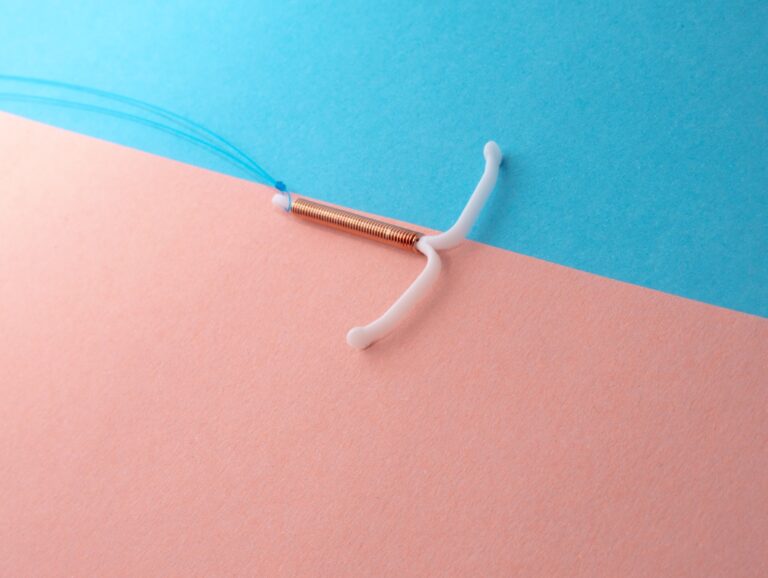The good news is that your IUD doesn’t have to stop you from having sex. In fact, it should make sex more fun for you and your partner(s).
You shouldn’t feel the strings (which are quite slippery due to vaginal secretion) or have problems with them latching onto sex toys. Plus, your IUD is 99 percent effective as soon as it’s inserted.
24 Hours After Insertion
There is no reason to wait to have sex after your IUD is inserted, and you can do so right away. However, there may be some discomfort from the procedure that lasts for a day or two. Make sure you use a backup method of birth control before having unprotected sex.
Most women experience cramping and spotting for about a day after the procedure. Some also feel a little dizzy. You can take Tylenol or Advil to ease the pain and discomfort. You can also ask your OB-GYN for a pelvic exam kit to help with the pain and discomfort.
Once you have the IUD inserted, it is 99% effective at protecting against pregnancy. The IUD will sit in your uterus, which blocks access to it from the outside world. It does, however, have strings that hang down into your vagina and cervix. You and your sexual partner can feel these strings during penetrative sex, but they should not be painful or uncomfortable.
It is possible to have an IUD inserted at any time during your menstrual cycle, but you should have one inserted during the first half of your cycle. This will allow the cervix to be at its most open, making it easier to place the device. The insertion process itself is very similar to having a pelvic exam, and only takes less than five minutes.
7-10 Days After Insertion
Depending on which IUD you have and when it was inserted, your device will start protecting you from pregnancy right away. Copper IUDs like Paragard begin working immediately, and hormonal IUDs such as Mirena, Skyla, and Liletta become effective seven days after insertion (or during your period, if inserted during the beginning of your menstrual cycle).
It’s totally okay to have sex with an IUD, but be sure to use a condom because there’s a small chance that it could slip out of place. Luckily, it’s pretty unlikely, but you should still check your pads or tampons or menstrual cups between periods to make sure it hasn’t popped out.
Once you have an IUD, it’s 99% effective at preventing pregnancy. But there’s a slight chance that it could fall out — and it’s more likely to happen during your first three months with it. If that happens, you’ll want to schedule a visit with your doctor to have it checked and put back in, and to get your period started again.
While it’s possible to have sex right after an IUD insertion, you probably won’t feel up for it because of the pain and cramping from the implantation procedure. Plus, your cervix might be sensitive afterward, and you may have some spotting and bleeding, too. So, to avoid getting your IUD in the wrong position, you should wait until you’re feeling more comfortable.
3 Months After Insertion
IUDs are one of the most effective forms of birth control available for women. They are long-lasting, easy to use and don’t require you to remember any pills or condoms. Plus, IUDs are 99% effective at preventing pregnancy and are also incredibly safe. However, some women who get IUDs are concerned about how the procedure will impact their sex life.
While you can have sex after your IUD is placed, you should wait at least 24 hours for the device to be fully in place. This is because rough sex can cause the IUD to move out of position. Having a device in the wrong place can lead to pregnancy, and can also leave you with symptoms such as heavy bleeding or mood changes that are characteristic of early pregnancy.
Cramping and back pain is completely normal after an IUD is inserted, but you can take steps to minimize it before your appointment. Getting enough sleep and drinking water is important, as are taking over-the-counter pain medications. It’s also helpful to come into the appointment in a good mood — being hungover and dehydrated can make things feel more painful, so try to avoid that.
Your gynecologist will insert the IUD during an office visit. You’ll lie on an exam table and the doctor will use a tool called a speculum to hold your vagina open. They will then clean your cervix and uterus, and will insert the IUD. It is placed in the small opening of your uterus, and then the IUD’s arms fold down into the uterus. The gynecologist will then wash her hands and remove the speculum.
6 Months After Insertion
The pain from the insertion procedure should go away quickly, but you might experience irregular bleeding or spotting for a few months after that. Using non-penetrative sexual activity or a backup birth control method can help keep you protected against pregnancy until your menstrual cycle settles down.
If you have a hormonal IUD, like the Mirena, Kyleena, Skyla, or Liletta, your periods may be heavier than usual for the first few months. They should gradually get lighter as the hormones kick in and your uterus gets used to them.
A small portion of IUDs will be expelled from the womb (called displacement). You can check that yours is still in place by inserting your fingers into your vagina and feeling for the string high up on your cervix. This is a little difficult to feel, so you can also ask your nurse or doctor to teach you how to do it.
Your doctor can remove an IUD in a few minutes during an office visit. They’ll use a metal tool called a speculum to open your vagina and then a small tool to fold up the arms of the IUD and slide it out of your uterus. You might have some cramping during the removal, but taking ibuprofen can help with the discomfort.
See Also:



